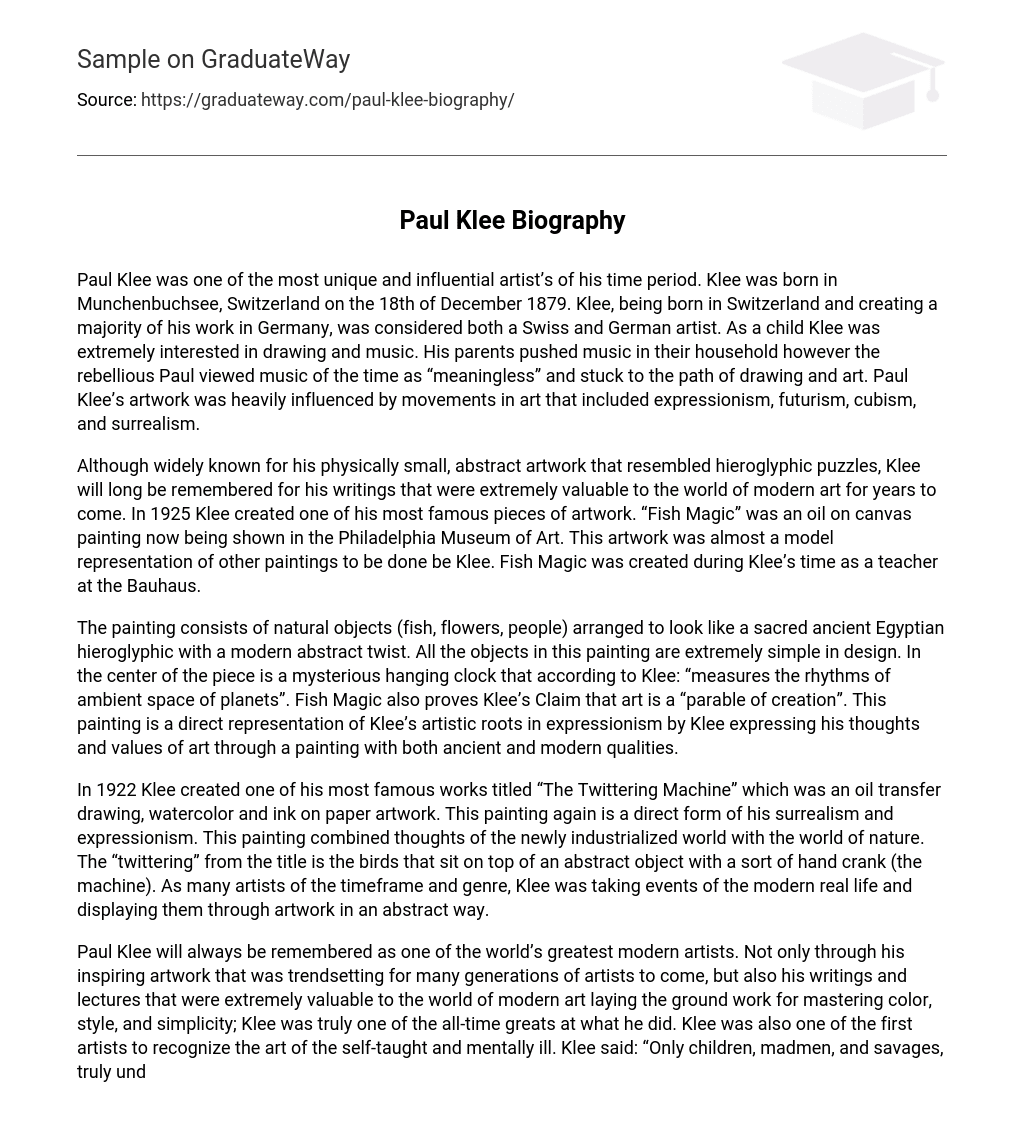Paul Klee, born in Munchenbuchsee, Switzerland on December 18, 1879, was a highly influential and uniquely talented artist. He resided mainly in Germany throughout his artistic career and was acknowledged as both Swiss and German. Even from an early age, Klee exhibited a strong fascination with drawing and music but held a negative opinion of the contemporary music of his era which he regarded as “meaningless.” Instead, he dedicated himself entirely to his love for art. His creations were influenced by multiple art movements such as expressionism, futurism, cubism, and surrealism.
Klee’s abstract artwork, which bore resemblance to hieroglyphic puzzles, gained widespread recognition. However, it is his writings that truly left a lasting impact on the world of modern art. In 1925, Klee produced a notable piece called “Fish Magic,” an oil on canvas painting currently exhibiting in the Philadelphia Museum of Art. This artwork exemplified the style that Klee would continue to explore in his future paintings. Notably, “Fish Magic” was created during Klee’s tenure as a teacher at the Bauhaus.
The painting features natural objects such as fish, flowers, and people arranged in a way that resembles a sacred ancient Egyptian hieroglyph with a modern abstract twist. All these objects have a simplistic design. At the center of the artwork, there is a mysterious hanging clock that, according to Klee, “measures the rhythms of ambient space of planets.” Fish Magic also serves as evidence for Klee’s belief that art is a “parable of creation.” This painting directly represents Klee’s expressionist artistic roots, as he expresses his thoughts and values about art through a combination of ancient and modern qualities.
In 1922, Paul Klee completed a significant artwork called “The Twittering Machine.” This piece, created using oil transfer drawing, watercolor, and ink on paper, exemplifies Klee’s surrealism and expressionism. It seamlessly blends elements of the newly industrialized world with the natural world. The title refers to the birds perched atop an abstract object resembling a machine with a hand crank. Like many artists working during this period and in this genre, Klee sought to depict real-life events and experiences in an abstract manner through his artwork.
Paul Klee, a renowned modern artist, is remembered for his exceptional contributions to the art world. His influential artwork set new trends for generations of artists to come. Furthermore, Klee’s writings and lectures were highly valuable in the realm of modern art as they established the foundation for mastering color, style, and simplicity. Klee’s immense talent and achievements solidified his status as one of the all-time greats in his field.
Moreover, he appreciated the artistic abilities of self-taught individuals and those with mental illnesses; indeed, he himself stated that only children, madmen, and savages truly comprehend the spiritual truth found in the realms in between.
Paul Klee encompasses different 20th-century art movements like Futurism, Cubism, Surrealism, and Expressionism. His exceptional abstract art is a result of his innate drawing abilities. While many artists in this era aimed to break away from traditional representational art, only a select few achieved the natural beauty and talent that can be seen in Klee’s simple yet captivating paintings. Klee’s connection to 20th-century art can be summarized by his own quote: “art does not represent the visible; rather it renders visible (the invisible).”





